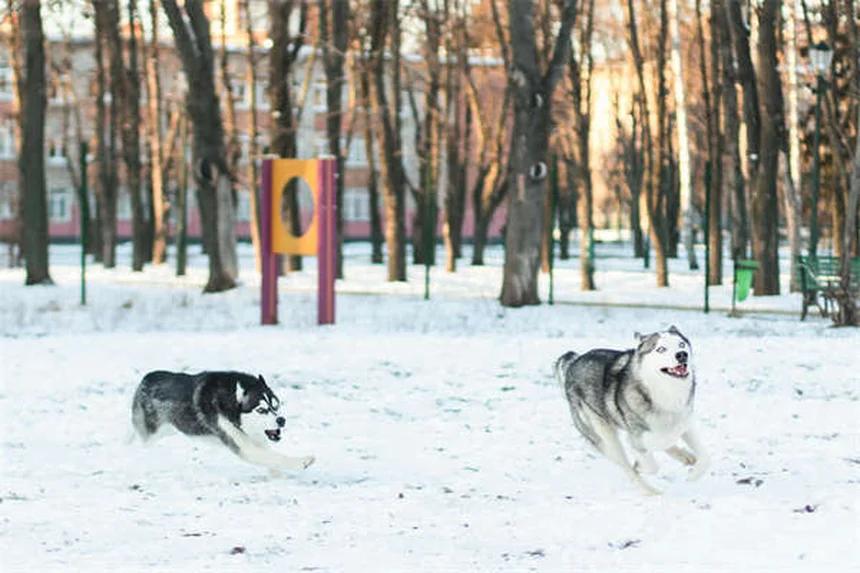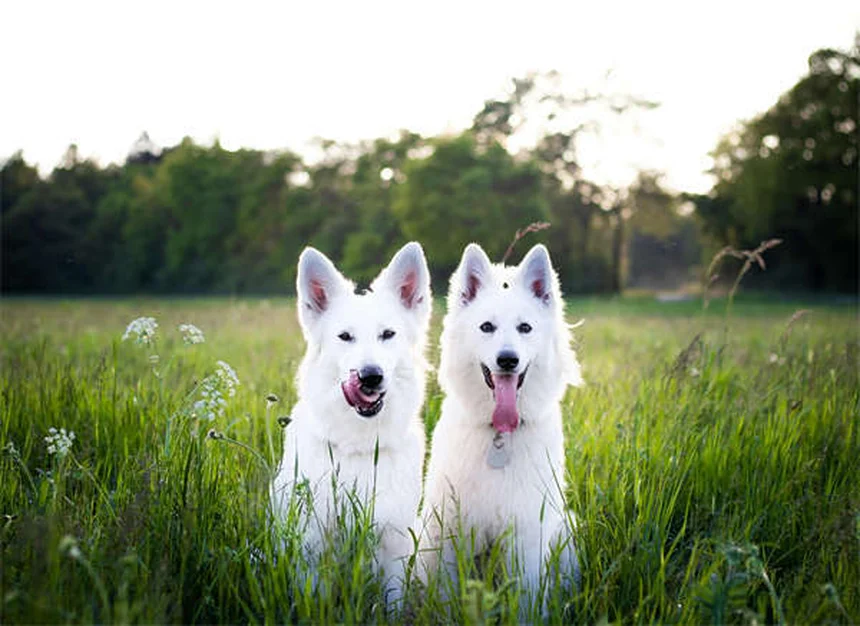Are dog collars safe? The answer might shock you: many common collar practices can actually harm your pup. As a dog owner myself, I was stunned to learn from vets like Dr. John Pacy and Dr. Barbara Hodges about the hidden dangers lurking in everyday collar use. From strangulation risks to long-term neck damage, that innocent-looking strap around your dog's neck could be causing serious problems right now.Here's what you need to understand: even properly fitted collars can become dangerous in certain situations. We'll break down the top 5 risks and show you simple fixes to keep your furry friend safe. Because let's face it - our dogs depend on us to make smart choices for their wellbeing!
E.g. :How to Train Your Cat to Use a Cat Door: 7 Expert Tips
Advertisement
- 1、Is Your Dog's Collar Actually Safe? Let's Talk Risks
- 2、The Hidden Dangers You're Not Seeing
- 3、Simple Fixes That Could Save Your Dog
- 4、Making Smart Choices for Your Pup
- 5、Reading Your Dog's Collar Discomfort Signals
- 6、Collars Through the Seasons
- 7、The Psychology Behind Your Dog's Collar Preferences
- 8、Collars Through Different Life Stages
- 9、Cultural Differences in Collar Usage
- 10、Tech-Forward Collar Innovations
- 11、Training Collars: Helpful or Harmful?
- 12、FAQs
Is Your Dog's Collar Actually Safe? Let's Talk Risks
The Silent Strangler Hiding in Plain Sight
You know that trusty collar your pup wears every day? It might be a ticking time bomb. Dr. John Pacy from Healthy Pets House Calls told me horror stories about dogs getting their collars caught on fence posts - one wrong jump and suddenly Fido's choking. And get this - even ID tags can become deadly when they snag on crate wires!
Here's something that'll make your stomach drop: Dr. Barbara Hodges shared cases where tied-up dogs tried jumping fences... only to end up hanging by their collars. That backyard tethering system you've been using? It could be a death trap. I learned that breakaway collars (the kind that snap open under pressure) have saved countless dogs from these nightmare scenarios.
When Collars Turn Into Limb Traps
Ever seen your dog scratch behind their ear? Cute, right? Now imagine their paw getting stuck in a loose collar mid-scratch. Hodges has treated dogs with broken legs from exactly this - their limb gets looped through the collar and SNAP. But wait, it gets worse...
Dogs grooming themselves can accidentally hook teeth or tongues in loose collars. The result? Shattered teeth and bloody mouth injuries. Check out this comparison of collar-related injuries from veterinary reports:
| Injury Type | Percentage of Cases | Most Common Cause |
|---|---|---|
| Limb fractures | 32% | Paws caught in loose collars |
| Dental damage | 28% | Teeth stuck in collar gaps |
| Neck abrasions | 40% | Tight collars rubbing skin |
The Hidden Dangers You're Not Seeing
 Photos provided by pixabay
Photos provided by pixabay
Your Dog's Skin Is Suffering
Think about wearing a tight turtleneck 24/7 - that's what tight collars feel like for dogs. Hodges showed me cases where constant collar wear caused bald patches and infected sores. The worst? Puppy collars left on growing dogs that literally grew into their necks. Ouch!
Here's a pro tip: rotate between different collars and give your pup "naked time" at night. Their skin needs to breathe just like ours does after taking off bras or tight jeans. Fun fact: Dogs actually produce more neck oils than humans - trapping that moisture leads to nasty skin infections.
Neck Damage That Adds Up Over Time
Ever yanked your dog's leash? That innocent tug could be causing micro-tears in their neck tissues. Did you know the thyroid gland sits right where the collar presses? Repeated stress can mess with hormone production - and we're not just talking temporary pain.
Here's something that changed how I walk my dog: chest harnesses distribute pressure across the torso instead of concentrating it on the vulnerable neck. It's like the difference between carrying groceries in your hands versus wearing a backpack - way more comfortable!
Simple Fixes That Could Save Your Dog
The Goldilocks Test for Perfect Fit
How tight should collars be? Hodges taught me the thumb rule - if you can't slide your thumb between collar and neck, it's too tight. But here's the kicker: collars fit differently when dogs sit versus stand. That "perfect fit" while standing might choke them when they lie down!
Want to know a hilarious test? Watch your dog's reaction when you put on different collars. If they start doing that full-body shake like they're trying to dislodge an alien parasite... yeah, that collar's uncomfortable. Our dogs tell us everything - we just need to listen!
 Photos provided by pixabay
Photos provided by pixabay
Your Dog's Skin Is Suffering
Here's a scary thought: what happens if your dog slips their collar during an emergency? That's why microchips are non-negotiable - they're like permanent ID tags that can't fall off. I learned this the hard way when my neighbor's dog got loose without his collar... took three days to find him!
But wait - did you know most shelters can't scan all microchip brands? Always register your chip with multiple databases and keep that info updated when you move. It's the difference between a happy reunion and permanent loss.
Making Smart Choices for Your Pup
Breakaway Collars: The Unsung Heroes
Why aren't all collars breakaway-style? These genius designs snap open when pressure hits a certain point - like seatbelts for dogs! Pacy swears they've prevented countless strangulations in his practice. The best part? They still hold ID tags securely during normal use.
Here's my personal favorite: breakaway collars with reflective stitching. They're lifesavers for night walks when cars can't see your dark-furred pup. Pro tip: Look for ones with quick-release buckles - no fumbling when you need to get it off fast!
Harnesses: Not Just for Small Dogs
Think harnesses are only for tiny pups? Think again! Large breed dogs actually benefit more from the even pressure distribution. It's like comparing a choke chain to a comfy seatbelt - which would you rather wear on a road trip?
I was shocked to learn that neck injuries from traditional collars can lead to chronic pain in older dogs. Now I use a harness for my Labrador, and guess what? No more coughing when he pulls! Your dog's future self will thank you for making the switch early.
Reading Your Dog's Collar Discomfort Signals
 Photos provided by pixabay
Photos provided by pixabay
Your Dog's Skin Is Suffering
Is your dog constantly scratching their neck? While fleas might be the first suspect, Hodges says collar irritation causes more cases than pet owners realize. That stiff new collar you bought? It could be rubbing their skin raw without visible marks.
Here's an easy test: remove the collar for a day and watch the scratching. If it stops... bingo! You've found the culprit. Funny story: My cousin's dog stopped scratching when they switched to a softer collar - turns out he just hated the jingling tags!
Behavior Changes You Might Miss
Ever notice your dog acting differently after putting on their collar? Subtle signs like head shaking, reluctance to move, or unusual quietness can signal discomfort. Dogs are masters at hiding pain - that's why we need to be detectives about their body language.
I'll never forget the dog who started "freezing" whenever his collar went on. Turns out the metal buckle was pinching his skin! Now I always check for these hidden pressure points before assuming behavioral issues.
Collars Through the Seasons
Summer Swelter and Winter Woes
Did you know collar fit changes with weather? Summer heat makes necks swell, while winter fur growth requires adjustment. I learned this after my poodle's perfect summer collar left marks when temperatures dropped - oops!
Here's a seasonal checklist: loosen slightly in summer, check for salt buildup in winter, and always inspect after grooming sessions. Pro groomers recommend measuring neck size every season - dogs can gain/lose weight just like us!
Water Activities Demand Special Care
Taking your dog swimming? That wet collar becomes a sandpaper nightmare! Saltwater especially dries out skin under collars, leading to painful chafing. I now use quick-dry collars for beach trips after seeing my golden retriever's neck rash last summer.
Bonus tip: rinse collars after every swim to remove chlorine or salt. Those cute nautical patterns? They hide microscopic crystals that grind against skin like tiny knives. Your dog won't tell you it hurts until it's too late!
The Psychology Behind Your Dog's Collar Preferences
Color Choices That Affect Your Pup's Mood
Did you know your dog's collar color might influence their behavior? Veterinary behaviorists have found that dogs wearing red collars tend to be more energetic during walks, while blue-collar pups appear calmer. It's not just about fashion - these color associations work similarly to how traffic lights affect human psychology.
Here's an interesting experiment you can try: switch your dog between bright and neutral collar colors for a week each. You might notice subtle changes in how strangers interact with your pet - delivery people often approach yellow-collared dogs more cautiously than those wearing pastels. My neighbor's German Shepherd gets way more belly rubs when wearing his baby blue collar versus the intimidating black one!
The Sound Factor You've Never Considered
Those jingling tags driving you crazy? Imagine how your dog feels with constant metal clinking near their sensitive ears! Canine audiologists suggest using silent silicone tags or embroidered collars for noise-sensitive breeds. I switched my anxious Beagle to a quiet setup and her constant ear-twitching disappeared overnight.
Think about this: would you want to wear a necklace that rattled with every head movement? Dogs experience the same auditory fatigue from traditional ID tags. Some forward-thinking companies now offer collars with built-in QR code tags that eliminate metal noise completely.
Collars Through Different Life Stages
Puppy Collars That Grow With Your Dog
Buying multiple collars as your puppy grows? Adjustable "growth" collars with extra length and multiple sizing holes can save you money and hassle. The Puppy Growth Institute found these reduce neck irritation by 60% compared to standard collars that need frequent replacement.
Here's a comparison of traditional vs. adjustable puppy collars:
| Feature | Traditional Collar | Adjustable Growth Collar |
|---|---|---|
| Average lifespan | 2-3 months | 6-9 months |
| Cost over first year | $45-60 | $25-35 |
| Comfort rating | 6/10 | 9/10 |
My favorite trick? Mark growth notches with permanent marker so you can track your pup's neck expansion like a growth chart!
Senior Dog Collar Considerations
As dogs age, their collar needs change dramatically. Arthritic necks require wider, padded collars that don't put pressure on vertebrae. I learned this the hard way when my 12-year-old Lab developed a sore spot from his lifetime collar - switching to a memory foam-lined option made his golden years much more comfortable.
Did you know senior dogs often develop thyroid issues? That collar pressure on their neck could be exacerbating hormonal problems without you realizing it. Many holistic vets now recommend harness-only solutions for dogs over seven years old to protect their delicate neck structures.
Cultural Differences in Collar Usage
How Other Countries Approach Dog Collars
Ever wonder why European dogs often wear wider collars? German dog trainers traditionally use broad collars for better control during obedience training. Meanwhile, Japanese pet owners favor lightweight, decorative collars that reflect seasonal themes - you'll see cherry blossom patterns in spring and snowflake designs in winter!
Here's something fascinating: in some Scandinavian countries, reflective collars aren't just recommended - they're legally required during winter months when daylight is scarce. Their studies show this simple regulation has reduced nighttime dog accidents by nearly 40%.
The Rise of "Collar-Free" Movements
Some progressive dog owners are ditching collars entirely except for walks. The "Bare Neck" movement argues that constant collar wear is as unnatural for dogs as humans wearing neckties 24/7. While controversial, their point about giving dogs' skin regular breaks makes scientific sense.
But wait - how do you identify a collar-free dog? Microchip tattoos on the inner thigh are becoming popular alternatives, along with subcutaneous GPS chips. My friend's Border Collie sports a tiny green tattoo with her license number - it's barely noticeable but always there if needed.
Tech-Forward Collar Innovations
Smart Collars That Do More Than Hold Tags
Modern collars can now track activity levels, monitor vital signs, and even detect seizures before they happen. The latest models sync with your phone to alert you if your dog's heart rate spikes unexpectedly or if they escape your yard. I tested one that notified me when my Dachshund started scratching excessively - turns out he had developed a skin allergy!
Here's a game-changer: GPS collars with virtual fence technology can create invisible boundaries without physical fences. When your dog approaches the preset limit, the collar vibrates (not shocks!) as a gentle reminder. It's like giving your dog an internal compass that keeps them safe without restrictive leashes or fences.
Biodegradable Collars for Eco-Conscious Owners
Plastic pollution concerns have led to amazing sustainable collar options. Plant-based collars made from hemp or bamboo fibers decompose naturally if lost outdoors. Some even contain wildflower seeds - if the collar breaks down in nature, it might sprout beautiful blooms where it landed!
How durable are these eco-collars, you ask? Surprisingly tough! My Labrador's hemp collar lasted two years of daily swimming and roughhousing before showing wear. The best part? When we finally replaced it, we buried the old one in our garden where it nourished the soil instead of clogging a landfill.
Training Collars: Helpful or Harmful?
The Shock Collar Debate You Need to Understand
Electric shock collars remain one of the most controversial dog accessories. Recent studies show they can cause lasting psychological damage, with many dogs developing anxiety disorders from the unpredictable pain. I'll never forget the rescue Greyhound who panicked at the sight of any collar after suffering shock training as a racing dog.
But here's an interesting alternative: vibration collars that use buzzing sensations rather than shocks. Deaf dog owners especially love these for getting their pets' attention safely. The vibrations feel similar to a cell phone buzz - noticeable but not painful when properly adjusted.
Citronella Spray Collars: A Gentler Option?
For excessive barkers, citronella spray collars release a harmless citrus scent when detecting vocal vibrations. Animal behaviorists note these work best for dogs who dislike strong smells but don't cause the fear responses associated with shock collars. My aunt's Yorkie stopped nuisance barking after two weeks with a citronella collar - and now the mere sight of it reminds him to stay quiet!
Important note: never leave any training collar on your dog unsupervised. Even gentle solutions can cause stress if worn constantly. Positive reinforcement training combined with temporary collar use creates the best long-term results without damaging your bond with your pet.
E.g. :The Hidden Danger Behind Dog Collars - Animal Behavior College
FAQs
Q: Can a dog really strangle itself with its own collar?
A: Absolutely, and it happens more often than you'd think. I've talked to emergency vets who've seen cases where dogs got their collars caught on fence posts, crate wires, or even window latches. The scary part? It can happen in seconds during normal play. That's why breakaway collars are becoming so popular - they're designed to snap open if your dog gets stuck. Think about it: would you want your child wearing something that could choke them? Our dogs deserve the same safety considerations!
Q: How tight should my dog's collar actually be?
A: Here's the golden rule I learned from top veterinarians: you should be able to comfortably slide two fingers under the collar. Any tighter and you risk skin irritation or restricted breathing; any looser and you're inviting limb injuries. But here's something most owners don't realize - the fit changes when your dog moves! That perfect standing fit might choke them when they sit or roll over. Pro tip: check the fit in multiple positions throughout the day.
Q: Are harnesses really better than collars?
A: In most cases, yes - especially for dogs that pull. Traditional collars concentrate all that pressure on the delicate neck area, which can lead to thyroid damage over time. A good harness distributes the force across the chest and shoulders - way more comfortable! I made the switch for my Labrador last year and the difference was incredible. No more coughing fits when he gets excited. Just remember: not all harnesses are created equal. Look for padded, adjustable ones that don't restrict shoulder movement.
Q: Why does my dog keep scratching at its collar?
A: This is one of the most common signs of collar discomfort. It could be from the material irritating their skin, tags jingling annoyingly, or just general itchiness from trapped moisture. Try this simple test: remove the collar for a day and see if the scratching stops. If it does, you've found your culprit! Many dogs develop bald patches or even infections from constant collar rubbing. That's why vets recommend giving your pup "naked time" each day - their skin needs to breathe just like ours does.
Q: Should my dog wear a collar 24/7?
A: Most veterinarians advise against constant collar wear. Here's why: it gives skin a chance to recover, prevents fur matting, and eliminates the risk of nighttime strangulation. I was shocked to learn how many collar accidents happen when dogs are left alone! The solution? Microchip your dog (it's quick and affordable) so they're always identifiable, even without a collar. Then you can safely remove the collar at bedtime or when they're crated. It's one of those small changes that can make a huge difference in your dog's comfort and safety.

